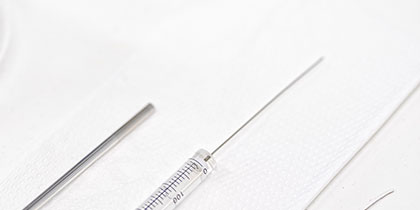Lipids
You could say that lipids are lipophiles, meaning that they are easily mixed with oils and fats, or in other words they “stick to themselves”. This is what makes lipids different from the other classes of biomolecules, which are primarily soluble in water.
Eight classes of lipids
A modern classification system divides lipids into eight different categories:
- Fatty acyls: a class of small molecules including fatty acids and their many derivatives; are basic components of other more complex lipids. This also includes biologically active, oxidized derivatives of polyunsaturated fatty acids such as elovanoids, eicosanoids and octadecanoids
- Glycerolipids, also known as glycerides, includes primarily mono-, di- and tri-acylglycerols
- Glycerophospholipids: also known simply as phospholipids; includes a number of subclasses with different polar head groups: phosphatidylcholine (PC), phosphatidylethanolamine (PE), phosphatidylserine (PS), phosphatidylglycerol (PG), phosphatidylinositol (PI) and phosphatidic acid (PA)
- Sphingolipids: a diverse group of sphingoid base compounds that includes common compounds such as sphingomyelins, ceramides, and sphingosines, but also several classes of glycosphingolipids such as gangliosides
- Sterol lipids: includes cholesterol and its derivatives, as well as bile acids and phytosterols
- Prenol lipids: a class of compounds that are based on five-carbon terpene (isoprene) units and result in linear, cyclic or branched chains, similar to fatty acids
- Saccharolipids: a class of compounds containing fatty acids directly linked to a carbohydrate structure (differentiating it from other glycolipid classes such as glycosphingolipids and galactoglycerides)
- Polyketides: a structurally highly diverse class of lipids; is created through three different classes of polyketide synthases
Obviously, lipids are more than just fats and oils. Fats and oils are only lipids though, since they are made up of tri-acylglycerols.



Lipid analogs or lipid-like compounds
In addition to the naturally occurring lipids, chemists have created artificial compounds that have similar structure or properties. These compounds may be referred to as lipid analogs or lipid-like compounds. Important classes of lipid-like compounds are those cationic and ionizable lipids that are used in lipid formulations of modern mRNA vaccines.

Key in biological functions
The solubility profile is what makes lipids useful in a biological system, which is a highly aqueous environment. The main biological functions of lipids are:
- Energy storage: acylglycerols and cholesterols form solid particles or organelles (with a phospholipid shell) from which fatty acids can be released and then used for energy creation in cells
- Cellular building blocks: membranes of cells and other biological entities are to a large extent made up of phospholipids, sphingolipids and cholesterol
- Signaling: not only oxidized fatty acids, but also certain sphingolipids, phospholipids, acylglycerols and sterols are known to perform primarily cell signaling
On a macro level, lipids contribute to adipose tissue (body fat) that can provide not only an energy reserve (in the form of white adipose tissue) but also thermal insulation (brown adipose tissue) and shock protection. On the micro level, lipids are also known to be involved in molecular transport and enzyme activation.

Lipids are of natural origin
The properties of lipids that are important in a biological system have also been put to technical use in products for industry and elsewhere in society. Since lipids are of a natural origin, these products are often labeled as “bio” and “eco” as in the case with lipid biolubricants and biofuels. Lipids are not only food and food ingredients, but are also used as ingredients in cosmetics and pharmaceuticals. The list of examples of their uses is very long, and grows longer every year.
